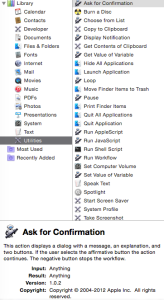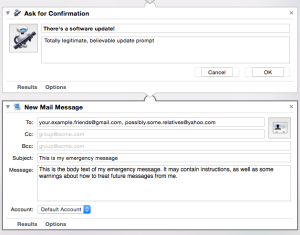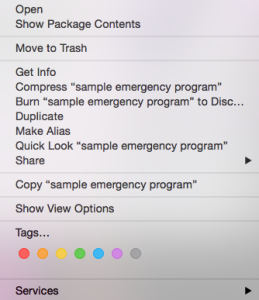I haven’t used this blog in over a year, and I don’t wish to be assumed to automatically stand by all of its contents.
Interesting Common Core prompt:
[This content is a repost from my tumblr feed. A transcription of the above image is available at the end of the post.]
I have been taking practice Common Core tests at school. They, unlike the tests that I would never speak about here, do not include any “agree to never copy this information anywhere to continue” or “sign here to indicate that you will not discuss or disclose information about this test” components.
Fun facts: I am reproducing this (probably) copyrighted work for the purpose of criticism and comment, my use is not of a commercial nature, the amount and substantiality of the portion used in relation to the copyrighted work as a whole is small, and I doubt that I’m reducing the market value of the copyrighted work through this post.
(I’d claim to be reproducing this work for news reporting purposes, because people should be aware of this, but I’m not sure I count as a news reporter just because I run a blog.)
I really don’t think I should have to write and refute strawman anti-student tracking arguments as part of a school exercise. This is transparent manipulation. Also, I don’t believe that a student would possibly write this letter. This is clearly written by a school board member or parent.
Since when do teachers waste instructional time looking for truant students? I have had many substitutes, but none of them have ever been assigned to my class because the teacher was out driving around trying to find a truant. The real reason that schools dislike people ditching class is because they lose funding (also why they incentivize contagious students to attend school).
I can tell what I am supposed to do here. I am supposed to say that some people argue that this is illegal, but it actually isn’t. (In reality, it’s got to be more complex. Right? Please don’t force me to wear a tracking device. And if you want to force a tracking device onto me that I can’t remove, you will need either physical force or some sort of law or court order requiring that I wear one.) Then, I am supposed to say that studies may not have shown results over the short term, but the results of 1 study are consistent with EIDs being implemented only in high-crime schools and normalizing those schools, it’s too early to see results, and correlation doesn’t imply causation because the lack of trust could have led to the tracking devices. Then, I should insult the blogger (Who is it? The link is actually to a glossary definition of blogger. I hope the seemingly anti-EID blogger isn’t too upset that they’re being used here without citation.) for not being a reputable source, because they’re just a blogger and not a real journalist.
However, if I’m stuck working from these terrible research notes, I can’t bring up any of the best arguments I know!
- If the tracking devices are student-removable, students who ditch will send their devices to school with friends.
- If the devices aren’t student-removable but are student-deactivatable, the students who ditch will turn theirs off. You will know who is absent, but not where they are. This is the same information you could have gotten by taking attendance.
- If the devices are neither student-removable nor student-deactivatable, there is no way your responsibility to maintain order overrides my right to privacy regarding my location on weekends and evenings.
- If the devices are neither student-removable nor student-deactivatable, but you claim you will only turn them on during school hours, I’d like to plant a microphone on you. Sure, I’m in a state with 2-party consent laws for recording, but I’ll only remotely activate it when you’re talking to me, which is perfectly legal, so you really have nothing to be concerned about. Also, I’d like to make copies of all your letters, but don’t worry, I’ll only read the ones addressed to me.
[Note that the red text is me typing over text that was rendered illegible by reflected light.]
Transcription of the image:
A student is writing a letter to the school board about its plan to require students to wear electronic identification tags. Read the beginning of the letter and complete the task that follows.
I am writing in support of the school board’s plan to require students at my school to wear electronic identification tags (EIDs) that will allow the administration to track the location of all students. Although the proposal may raise privacy concerns, its implementation would uphold and defend the school’s very reason for being—teaching. As anyone at my school can attest, teachers and school administrators waste precious instructional time tracking down students who skip class to hangout with their friends. The purpose of school is to give young people the opportunity to learn skills and information required to succeed in life. We learn not only how to read, write, and understand math, but also how to interact with others. For these reasons, school is the most important place in a young person’s life, and the achievement of its mission should not be hindered by unruly students. EIDs would help ensure that it isn’t by allowing educators to focus on education.
Some may contend that requiring students to wear EIDs constitutes a warrantless search and so runs afoul of the Fourth Amendment.
Student Notes:
The student has taken these notes from credible sources:
- Fourth Amendment to the United States Constitution states: “The right of the people to be secure in their persons, houses, papers, and effects, against unreasonable searches and seizures, shall not be violated, and no Warrants shall issue, but upon probable cause, supported by Oath or affirmation, and particularly describing the place to be searched, and the persons or things to be seized.”
- US Supreme Court in United States v. Jones—police must obtain a warrant before attaching a global positioning system (GPS) tracker to the car of a suspected drug trafficker.
- US Supreme Court in New Jersey v. T.L.O.—schools have a responsibility to maintain order, which can override Fourth Amendment rights when there is “reasonable suspicion” that a school rule has been violated.
- US Supreme Court in Veronia School District 47J v. Acton—schools have a responsibility to maintain order in the “special situation” of public schools and that responsibility overrides the student’s right to privacy.
- National technology blogger—EIDs can be hacked to show wrong locations for people wearing them.
- Study of several Los Angeles high schools–students at schools using EIDs trust teachers less than students at schools not using EIDs.
- Study of crime rates in areas around high schools—no significant relationship between use of EIDs and crime near schools.
The writer wants to acknowledge a counterclaim to the argument introduced in the first paragraph. Using the student’s notes, complete the second paragraph by writing the counterargument.
Setting up an automated email with Automator on a Mac
Note: Images are redundant, are visual aids to the tutorial, and do not provide significant information beyond what the text provides. They will not be transcribed unless upon specific request.
The application I will show you below how to create sends out an emergency e-mail upon login if the user responds to a seemingly-benign dialogue box with what’s normally the default option. I use this application on my decoy user account (similar username, uses one of my old passwords) so that if I am coerced into logging into my computer, I can get a message sent out without writing one. Warning: It will be obvious to a viewer that this script is running once you “ignore the update notification”. This does not run in the background. However, it should work quickly enough that you can prevent interference with the email, which would be more difficult to do if you were actually writing the email in real time.
Writing the Script:
Go to the Utilities folder within your Applications folder and open Automator.
Choose “Application” as your document type.
Make sure the Library options are open and select Utilities.
Select “Ask for Confirmation” from the list of actions and drag it into the workflow on your right.
Replace the “cancel” button with something saying “install update”.
Next, go back to the library and select “Mail”. Drag the “New Mail Message” action into the workflow.
Type a message, and select recipients. Your workflow should now look like this.
When you save your application, call it something benign like “VTN Update Check”.
Setting Your Script to Auto-Run:
Open System Preferences and go to Users and Groups.
Select Login Items.
Click “+”, add your application, and check the “Hide” box.
What this should look like when running:
Changing your Application’s Icon (not required):
Find something whose icon you would like to see in place of the robot icon.
Get Info (⌘ I) on the thing and select the icon.
Copy (⌘ C) the icon.
Open Preview and select “New from Clipboard”:
You should see something like this:
Save this file as AutomatorApplet.icns (doesn’t matter where.)
Now, find your application, right-click it, and select “Show Package Contents”:
Open the Resources file and find the image AutomatorApplet.icns.
Replace it with your new icon.
When you next run the program, it should look like this:
This is my first tutorial of this kind, so if there are any problems, please alert me in the comments.
89.0% (.95 probability of being between 84.3% and 92.7%)
Finally, I have exact numbers on how much of a year of abled life a year of my life is worth, complete with 95% confidence intervals! This information will surely be useful to anyone making resource allocation decisions. For example, if a scarce medication has a 95% chance to save an allistic patient’s life, but a 99% chance to save mine, the QALY-maximizing to do is to give it to the allistic patient.
So, where are these numbers from, anyway? Some radical eugenicist or curebie site? No, actually. These are disability weights, as published in The Lancet. Designed to lead to the most beneficial resource distribution when dealing with non-life-threatening conditions, they often suggest inappropriate outcomes when applied in certain cases.
The method used to generate them was a combination of “person tradeoffs”, which effective altruist and blogger Jeff Kaufman describes as asking “people, generally public health professionals, if given the choice between curing 1000 people with disability X and 2000 people with disability Y which one they would choose”, with the more intuitive method of asking people which condition is worse. A full copy of the 2010 results is seen in this PDF.
(Note: Jeff Kaufman does not say ableist things online, and he does not seem to think that my life is less valuable than that of an NT. Do not take any criticisms of disability weights or the QALY as criticisms of him.)
Unfortunately, while this is very useful for cases in which the disability should be cured, it effectively assumes that it should be cured. Using time tradeoffs, another common method, you’d only get me to accept a cure if it increased my lifespan by quite a lot, as I’m not sure whether what I call “me” would survive the process. Clearly, this does not mean that neurotypicality is a horrible nightmare that must be cured now, nor does it mean that my life is more valuable than NT life (although, as a partially selfish being, I naturally value my own life more than that of others, and if you’re reading this website instead of trying to acquire resources for lifesaving organizations, you’re partially selfish too).
So, what course of action am I proposing?
The costs of repeating the research required to generate accurate numbers would be high, because the original research was international. The benefits of having more accurate QALY numbers are probably low, because many groups would keep using the old numbers, and the new numbers are not likely to dictate very different actions to nonprofits. Completely ignoring quality-of-life considerations leads to equally bad ideas, such as considering nonlethal torture of thousands to be permissible if it provides a 5% chance of increasing 1 person’s lifespan by a couple decades. Spending decades trying to calculate humanity’s CEV with human minds and budgets is highly inefficient.
The people looking for some mechanism of arriving at the most moral utility function seem to be people trying to develop a friendly superintelligence, which, if done correctly, would definitely prevent medical ableism, but considering the main impact of a friendly superintelligence to be “an end to medical ableism” would be like considering the main impact of the development of intelligent life to be “extinction of the dodo bird”.
The best action is probably to keep using the same numbers until we actually need better ones, and supporting the search for a most moral utility function by sending money to MIRI or one of the other “safe/Friendly AI” groups, who seem to be trying to create an agent which ends up following the most moral utility function.
I’m sure there’s a reason why nobody’s tried this yet…
I’ve done some reading about stereotype threat lately, and multiple sources seem to agree that reminding people that they are in Category X, which they have been told is bad at Y, will make them worse at Y. While it’s clearly impossible to thoroughly remove harms of this nature, it seems that they can easily be reduced.
Here’s an idea for all test-producing companies out there:
Change your testing instructions such that the demographic sections of your answer sheets are filled out last. This way, you won’t be reminding students of their membership in demographic categories more likely to fail the test before they take the test, which will apparently raise the scores of people in discriminated-against groups with no real expended effort on your part.
You can further reduce score differences in girls and minority students by stating that your test designers have taken sociology-supported measures to equalize scores across all demographics. It won’t even be a false statement.
I realize that a side effect of filling out the name-address-ethnicity section of the answer sheet first may be allowing late students some margin of error, but considering how much the test instructions call for test administration at the same time across the country, making things easy for late students does not appear to be a priority of any sort.
This appears to be a rather obvious partial solution. However, most ideas that seem (to an outsider) to be an obvious way to get good things for free turn out to be things that people within the field have considered and dismissed. (See: perpetual motion machines.) People remember outsiders coming up with amazing, creative ideas precisely because it’s a rare event.
I estimate the probability that this idea is feasible to be rather low. If anyone can spot a reason why this isn’t feasible, or why my estimate is wrong, please let me know in the comments.
Autism: the New A-Bomb?
Combining the positions of anti-autism authors, I am apparently a nuclear fission bomb. Salon writer Marie Myung-Ok Lee states that autism is “a public health emergency, no less deadly and devastating than Ebola.”
NBC quotes autistic professor Stephen M. Shore as saying that he “was hit with the autism bomb at 18 months old.”
Finally, NBC web commenter I’m stil [sic] drunk at 6 am!!!!! claims that an autistic child was the cause of a spousal murder-suicide, and then asks “why take two lives when you could have just taken .5?”
If we treat these statements as fact, they indicate that autism is deadly and devastating, a bomb, and has a half-life.
I think that the conclusion is clear: autism is a nuclear bomb. Clearly, the Autistic Self-Advocacy Network should take advantage of this, as well as their autistic-run DC location, during the next public policy debate.
Comments on NBC’s report on the murder of London McCabe
I read and summarized these comments, so you don’t have to. I did this because humor has become one of my default responses in these sorts of situations. (I’ve even made jokes while evacuating buildings.)
3 comment types that have been excluded from this summary due to overly high prevalence: “Walk in the perpetrator’s shoes, having an autistic child is so haaaard,” “Murder is wrong, don’t murder autistic people, poor kid,” and all replies to comments.
- Autistic kids are 0.5 of a life. (I think this illustrates why the disability/quality-adjusted life year is a bad idea in practice.)
- This woman is a total scumbag for [description of crimes as phrased using feminist/social justice rhetoric], so feminists shouldn’t defend her just because she’s female. (I’ll be sure to tell all the feminists out there defending this woman, who *definitely* exist and are not fake, that they are hypocrites at the next Global Feminist Conspiracy meeting.)
- I will mock the murder victim in an anti-Republican political joke. How could this possibly make Democrats look bad in any way?
- Somehow, the perpetrator being fat caused this problem, because fat is somehow magically the root of all evil.
- I will defend the honor of a victim of a mental-disability motivated hate crime by claiming the mother is mentally ill, because I am not at all hypocritical!
- I predict that the perpetrator will go free, because the justice system is biased against men. This proves my argument that the justice system is biased against men.
- I will use this to advocate for my not-particularly-related antiwar opinions, even though it’s hard to actually draw any connections between war and ableist hate crimes, while at least using polite phrasing.
- People show support for this murderer because they are misandrist, and not because they are ableist.
- She should have killed an adult male, because then she would have gotten away with it, because misandry.
- Everyone accused of a crime should be killed even before a trial, because otherwise the government has to pay for basic needs of alleged criminals, like food, shelter, and public defenders. Zero tolerance for violent crime! Also, the perpetrator is fat.
- The perpetrator will walk free, because liberals are terrible people.
- It’s her fault, she didn’t use a (seemingly yet-to-be-invented) prenatal test for autism and then abort.
- [sarcastic conservative] If it’s okay to abort a fetus, why not murder a 6-year-old?
Comments made before the child’s diagnostic status became clear:
- Brutally murder her for her brutal murder of her child, because vengeance and justice are one and the same.
Welcome!
This blog will discuss autistic politics, my attempts at clearer reasoning, as well as other, unrelated topics.
There are no trigger warnings or content notes on this blog at this time. This is because I do not expect to have a large enough audience to have readers who require or prefer these warnings. If you would like me to add warnings for any specific phenomenon, please make your request in the comments.
Speaking of comments, please be polite in the comments. No slurs. (Yes, the r-word is a slur against people with intellectual and developmental disabilities.) A more specific comment policy may be developed if it becomes necessary.
About me: I’m an autistic, aspiring rationalist, atheist student who has femininity.
As you may guess, I write this blog under a pseudonym. Writing under a pseudonym is a negligable cost to me, which can reduce my already-small risk of recieving death threats significantly. Anonymous blogging also offers the advantage of being the first result for a search for my pseudonym. I would like to thank the Rinkworks fantasy name generator for developing my pseudonym, by the way.
The phrase “with femininity” is used both as a reference to the awkwardness of the phrase “person with autism,” and to indicate that femininity is not a major component of my identity, but rather just something that I happened to end up with.















